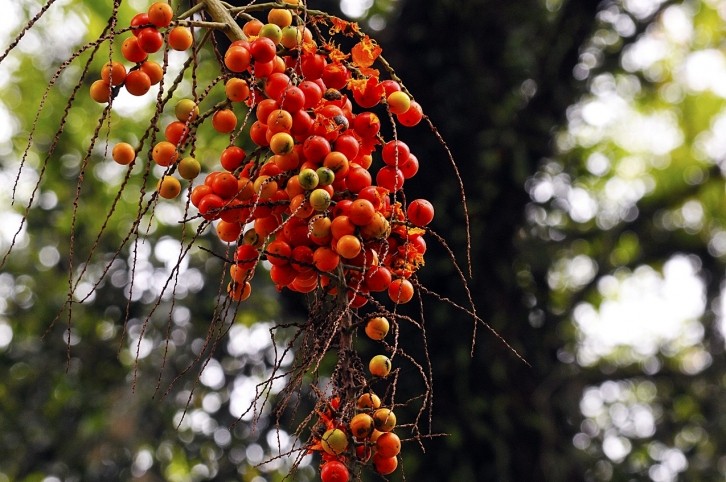All parts of Jerivá fruit show promise as “superfood” ingredients

According to the results, the different parts of the fruit contain levels of nutrients such as phenolic compounds and antioxidants rivalling those of established superfruits, wrote Beatriz C. B. S. Mello, researcher at the Federal University of São Carlos, Buri, Brazil, and colleagues in Antioxidants.
Commenting independently, Inna Yegorova, founder and owner of the nutraceuticals consulting firm Inna Consulting told NutraIngredients that the study “provides a robust foundation for expanding research into this promising fruit.”
“Knowing the antioxidant capacity helps position Jerivá as a superfood, which can attract interest from health-conscious consumers and the wellness industry,” she said.
A nutritious fruit
Most fruits are rich sources of essential nutrients including vitamins, minerals and phenolic compounds, which can be used as natural additives to food products, sid the researchers. “The knowledge and use of wild fruits in human nutrition could be a good source for public policies against malnutrition,” they added.
Jerivá (Syagrus romanzoffiana) grows abundantly on palm trees in tropical and subtropical parts of Latin America. Almost half of the fruit (47%) consists of the pulp, with the seed and the peel making up 43% and 10% of the fruit respectively. Instead of human consumption, the fruit is mainly used as animal feed or thrown away, and no studies have analyzed the nutritional benefits of each part of the fruit, note the investigators.
Profiling the peel, pulp and seeds
In the latest study, the research team collected Jerivá fruits in Brazil then washed, sanitized and peeled them. Once the peel, pulp and seeds were separated, the team dried them and ground them in a knife mill before freezing them and measuring their nutrient levels.
According to results from spectrophotometry, the researchers found that every 100g of dry matter (dm) of Jerivá seeds contained 12.0mg of vitamin C, similar to the fruit of persimmon. The peel and pulp meanwhile were more comparable to blackberries with 81.7mg and 92.3mg per 100g dm respectively. They added that the fruit “can be considered a good alternative for vitamin C consumption” and can help people to hit their recommended dietary allowances of the vitamin.
From colorimetry studies, Mello and colleagues observed that the pulp and peel are rich sources of phenolic compounds, similar to high-phenolic-level fruits such as the banana passionfruit, with 1089 and 971 gallic acid equivalents (GAEs) per 100g dm respectively. Specific polyphenols detected by high performance liquid chromatography (HPLC) included hydroxy benzoic acid, procyanidin B2, coumaric acid and ferulic acid.
The team used tests such as Trolox Equivalent Antioxidant Capacity (TEAC) to assess the fruit’s antioxidant capacity. They found that the pulp had antioxidant levels of 3.5 mmol Trolox equivalents (TEs) per 100g dm, the level of concentrated lingonberry – a well known superfruit. Meanwhile, the seeds had 1.7 mmol TEs per 100g dm, putting them on a level similar to pomegranates.
The researchers also found that the antioxidant capacity strongly correlated with the total phenolic content, and vitamin C was responsible for 6.2% of antioxidant capacity in the peel compared with 4.7% and 1.4% in the pulp and seeds respectively. As a result, the team concluded that “the phenolic compounds are responsible for the antioxidant capacity” in this fruit.
In terms of carotenoids such as (all-E)-β-carotene, (9Z)-β-carotene and (all-E)-lutein, the peel beat the pulp, with HPLC-derived levels of (all-E)-β-carotene (5.16 mg per 100 g dm) comparable to that of papaya fruit.
“The synergistic effect of all the compounds found in the fruit could be positive and stimulate fruit consumption and research,” say Mello and colleagues. They add that “[t]he knowledge of all these properties can be an incentive to commercial use of the fruit, as well as its use as an ingredient in several formulations in the food.”
Commercializing Jerivá
Jerivá could be used in many different types of food products, such as a flour substitute or flavor or nutritional enhancement in bread, muffins and cookies, and an ingredient to add to the texture of energy bars, granola, and snack mixes, Yegorova said.
However, its widespread use faces some challenges, including limited awareness and research into its properties, she noted.
“Establishing a reliable supply chain for Jerivá involves addressing issues related to cultivation, harvesting, and processing. Ensuring sustainable and ethical practices can be challenging,” she said, adding that setting up processing methods and gaining regulatory approval are significant hurdles.
Source: Antioxidants 2024, 13(6), 711
“Bioactive Compounds and Antioxidant Capacity of Pulp, Peel and Seeds from Jeriva (Syagrus romanzoffiana)”
doi: https://doi.org/10.3390/antiox13060711
Authors: Beatriz C. B. S. Mello et al.





